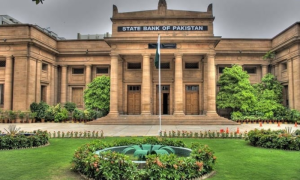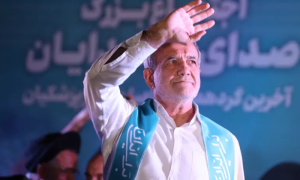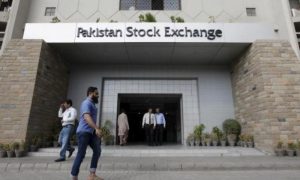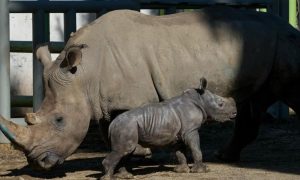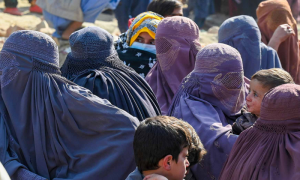ISLAMABAD: Real GDP grew by 2.38% in FY24, reversing the negative growth of FY23 due to prudent policy management, resumed inflows from partners, and recovery in major trading partners.
The revised GDP growth rate for FY23 is -0.21%, lower than the provisional estimate of -0.17%.
Agriculture sector growth, the highest in 19 years, was the key driver of economic growth in FY24. This sector grew by 6.25% in FY24, driven by 16.82% growth in key crops like wheat, rice, and cotton.
Industrial sector grew by 1.21% in FY24, with manufacturing up by 2.42% and construction by 5.86%.
Services sector, making up 57.7% of GDP in FY24, experienced a moderate growth of 1.21%.
GDP at current market prices increased by 26.4% to PKR 106,045bn in FY24, up from PKR 83,875bn last year.
Per capita income rose by USD 129 to USD 1,680, due to increased economic activity and exchange rate appreciation.
The investment to GDP ratio fell to 13.14% in FY24 from 14.13% in FY23, mainly due to contractionary macroeconomic policies and political uncertainty.
The saving to GDP ratio was 13.0% in FY24, slightly down from 13.2% in FY23.
Outlook: The government aims to stabilize the economy by prioritizing exports and investment, with a goal of achieving 5.5% growth by FY27. Strategies include increasing trade and investment openness, controlling foreign exchange speculation, and implementing sector-specific reforms. Global economic recovery is expected to improve the industrial sector by FY25, further benefiting the services sector and enhancing domestic production and price stability.
Pakistan’s current account deficit (CAD) narrowed by 94.8% to USD 0.2bn in 10MFY24, compared to USD 3.9bn during the same period last year.
The trade deficit in goods decreased by 21.6% to USD 17.7bn in 10MFY24 from USD 22.6bn last year due to a significant decline in imports.
The primary income account deficit rose by 34.8% to USD 6.1bn in 10MFY24, compared to USD 4.6bn last year, driven by higher dividend repatriation and interest payments.
Remittances experienced a 3% YoY decline, totaling USD 23.9bn during 10MFY24. Major contributions during 10MFY24 came from Saudi Arabia – USD 5.8bn (24.3%) followed by U.A.E – USD 2.9bn (17.6%).
The financial account saw net inflows of USD 3.9bn in 10MFY24, mainly due to inflows from IMF’s SBA and friendly countries, compared to outflows of USD 0.6bn last year. FDI inflows increased by 8.1% to USD 1.5bn in 10MFY24, compared to USD 1.3bn in the same period last year.
Total reserves were recorded at USD 14.0bn, including SBP’s reserves of USD 8.9bn as of June 5, 2024. The PKR appreciated by 2.8% from end-June’23 to May’24.
From 10MFY24, M2 grew by 7.0% to reach PKR 2.2trn, in contrast to a growth of 4.4% to PKR 1.2trn during the same period of the previous year.
Outlook: The outlook for export growth is promising due to improved global trade conditions and strengthened supply chains, while anticipated import growth will stimulate domestic economic activities. Remittances are expected to rise, positively impacting the CA balance for FY25. The government is optimistic about securing a long-term IMF program to support structural reforms.
With high revenue collection of PKR 9.8trn (41% higher YoY), the fiscal deficit was contained at 3.7% of GDP during 9MFY24 against last year same period’s deficit of 3.6%.
Total expenditures during 9MFY24 grew by 37% to PKR 13.7trn (PKR 10.1trn in same period last year) mainly on account of 33% higher current expenditure (PKR 12.3trn). This higher current expenditure was on the back of 54% jump in markup payments amid higher rates at domestic and international levels.













